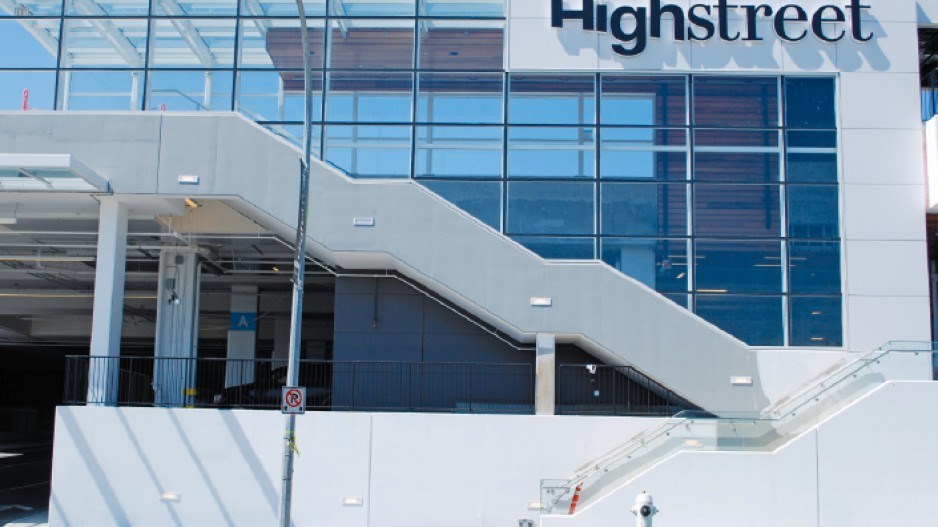Abbotsford the bold
There was much handwringing when Abbotsford bid to extract 920 acres from the agricultural land reserve (ALR) in 2005, on the grounds the exclusion would meet future development needs foreseen under its City in the Country plan.
Ultimately, the city won an exclusion of 441 acres and continues to court controversy when development comes too close to farmland.
But the completion this year of the new HighStreet shopping complex overlooking Highway 1 at Mount Lehman Road is proving to be a model for communities in B.C. and Alberta with its compact form.
“There just isn’t the developable land, even if you’re in Abbotsford,” Darren Kwiatkowski, executive vice-president of Vancouver-based Shape Properties Corp., when the project was getting started in 2010.
The final form is a cross of the village-style centres seen at Park Royal and the stacked forms featuring under-store parking pioneered by Ikea at its Coquitlam outlet and Wal-Mart at its Grandview Corners location in Surrey – developed by Kwiatkowski’s former employer SmartCentres.
It’s not the cheapest way to build a shopping centre, Kwiatkowski concedes, but it does save on land costs.
“For 600,000 square feet at traditional suburban densities, it requires 60 acres; this is built on 20 acres,” he said. “We think it’s a game-changing development.”
The approach has attracted the attention of Calgary planners, who want to see similar projects as that city struggles to contain itself.
Municipalities in the Lower Mainland are also taking note, and Kwiatkowski expects lessons from HighStreet to come in handy as it pursues the redevelopment of Burnaby’s Brentwood shopping centre.
Plans call for 1.5 million square feet of development at Brentwood, up from 500,000 today, with residential towers of about 60 storeys. Construction will take three years and will occur around existing and in-coming users of the property.
Rate pressure
Popular opinion maintains that the Bank of Canada won’t lift its benchmark interest rate for the foreseeable future, but the Royal Bank of Canada’s move to raise rates posted for new mortgages (existing mortgages are unaffected) is seen by some as a sign of things to come.
The lift of 10 to 20 basis points follows the bank’s quarterly housing affordability survey, which again tagged Vancouver as the least affordable residential property market in the country.
“Persisting poor affordability levels have been a prominent factor continuing to weigh on B.C. housing demand this year,” the report continued. “Home resales in the first quarter fell for the fifth consecutive quarter and stood more than 30% below the 10-year average.”
B.C. is the only province that saw declines in prices regardless of housing type, and while this boosted affordability, the report pointed to interest rate changes as setting the pace for changes in housing affordability.
By the same token, restrictions on mortgage insurance – which have significantly cut the volume of mortgages written by CMHC – and other steps to rein in mortgage lending in recent years have also cut into house sales. A cap on mortgage amortizations being studied at the federal Office of the Superintendent of Financial Institutions would further limit conventional, uninsured mortgages to 25-year amortization periods, down from as much as 35 years today.
On the positive side, RBC suggests that the slide in resale activity is stabilizing even though buyers continue to hold the upper hand. Various observers note that sellers are content to be patient, and the latest statistics from the Real Estate Board of Greater Vancouver note that the benchmark price for housing in the region rose 0.2% in May to reach $598,400.
May marked the fourth consecutive month resale prices increased, with the cumulative increase since prices bottomed out in January totalling 1.8%. •




